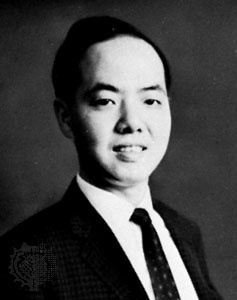Lee, Tsung-Dao
Chinese-American physicist
born Nov. 24, 1926, Shanghai, China
 Chinese-born American physicist who, with Chen Ning Yang (Yang, Chen Ning), received the Nobel Prize for Physics in 1957 for work in discovering violations of the principle of parity conservation (parity) (the quality of space reflection symmetry of subatomic particle interactions (subatomic particle)), thus bringing about major refinements in particle physics theory.
Chinese-born American physicist who, with Chen Ning Yang (Yang, Chen Ning), received the Nobel Prize for Physics in 1957 for work in discovering violations of the principle of parity conservation (parity) (the quality of space reflection symmetry of subatomic particle interactions (subatomic particle)), thus bringing about major refinements in particle physics theory.In 1946 Lee was awarded a scholarship to study in the United States, and, although he had no undergraduate degree, he entered the graduate school in physics at the University of Chicago, where Enrico Fermi (Fermi, Enrico) selected him as a doctoral student. After working briefly at the University of Chicago's Yerkes Astronomical Observatory (Yerkes Observatory) in Wisconsin, the University of California at Berkeley, and for two years with Yang at the Institute for Advanced Study, Princeton, N.J., Lee was appointed assistant professor of physics at Columbia University in 1953.
In 1956 Lee and Yang concluded that the theta-meson and tau-meson, previously thought to be different because they decay by modes of differing parity, are in fact the same particle (now called the K-meson). Because the law of parity conservation prohibits a single particle from having decay modes exhibiting opposite parity, the only possible conclusion was that, for weak interactions at least, parity is not conserved. They suggested experiments to test their hypothesis, and in 1956–57 Chien-Shiung Wu (Wu, Chien-Shiung), working at Columbia University, experimentally confirmed their theoretical conclusions. (See also CP violation.)
In 1960 Lee was appointed professor of physics at the Institute for Advanced Study, and three years later he returned to Columbia to assume the first Enrico Fermi professorship in physics. From 1964 he made important contributions to the explanation of the violations of time-reversal invariance, which occur during certain weak interactions.
- Georgian poetry
- Georgian style
- Georgia O'Keeffe
- Georgia Platform
- Georgia Southern University
- Georgia State University
- Georgia, Strait of
- Georgia, University of
- georgic
- Georgievsk, Treaty of
- Georgi Mikhailovich Dimitrov
- Georgios Grivas
- Georgios N. Hatzidakis
- Georgios Papandreou
- Georgi Parvanov
- Georgi Sava Rakovski
- Georgius Agricola
- Georg Jellinek
- Georg Jenatsch
- Georg Jensen
- Georg Joachim Rheticus
- Georg Kaiser
- Georg Kerschensteiner
- Georg Ledebour
- Georg Michaelis